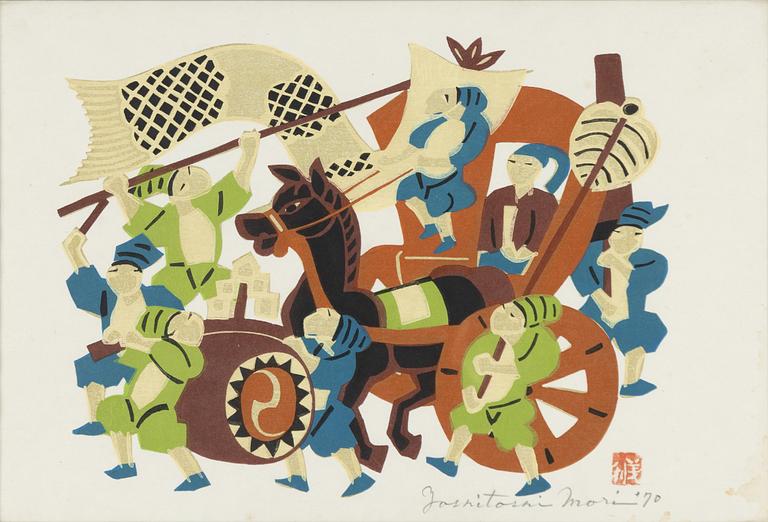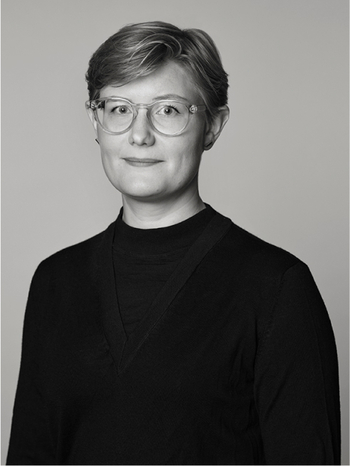Yoshitoshi Mori
Yoshitoshi Mori, Figure scene with horse and cart, 1970.
Kappazuri / stencil print. Signed in pencil Yoshitoshi Mori dated '70 and with the artist's seal in red. Image area 29.5 x 43.8 cm. Frame 31.5 x 46 cm.
Stains. Not examined out of the frame.
Artist
Yoshitoshi Mori (森 義利, Mori Yoshitoshi, was a Japanese artist famous for his kappazuri stencil prints. He was a member of the mingei movement (craft with a focus on folk art) and began his artistic career with textile art and later worked in graphic prints. His colorful images often depict scenes from the kabuki theater, or motifs taken from folk traditions and festivals.
Yoshitoshi was born in Tokyo in 1898. He studied art at the Kawabata School of Fine Arts and met Serizawa Keisuke and Yanagi Sōetsu, who introduced him to the mingei movement during that period. It was not until the 1950s that Yoshitoshi switched to creating works on paper, and was then included in the sōsaku hanga movement, where he became one of the most prominent artists. Yoshitoshi was criticized by Yanagi Sōetsu in the 1960s for having abandoned the mingei movement, after which he focused on kappazuri stencil prints.
Yoshitoshi exhibited his work in many solo exhibitions in Japan in the 1960s and participated in thirty international exhibitions between 1957 and 1977. He was awarded an honorary doctorate by the University of Maryland in 1984 and was formally honored by the Tokyo Metropolitan Government.








































